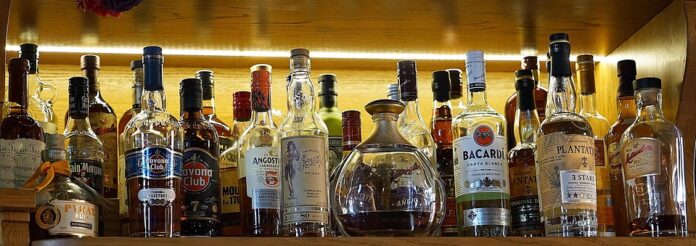Introduction
The alcohol distribution industry is a complex and multifaceted sector that involves various players, including bars, restaurants, and retail outlets. These establishments play a crucial role in shaping alcohol distribution strategies, as they act as intermediaries between producers and consumers. In this report, we will explore how bars, restaurants, and retail outlets influence alcohol distribution strategies, focusing on their impact on sales, marketing, and overall industry dynamics.
Role of Bars in Alcohol Distribution
Increasing Sales Through Promotion
Bars are important channels for alcohol distribution, as they provide a direct link between producers and consumers. Bars often work closely with alcohol producers to promote their products through various marketing initiatives, such as happy hours, special events, and tastings. These promotions help to increase sales and raise brand awareness, ultimately driving revenue for both the bar and the producer.
Creating a Unique Customer Experience
Bars also play a crucial role in shaping consumer preferences and trends. By offering a unique customer experience, such as craft cocktails, exclusive spirits, or themed nights, bars can influence consumer behavior and drive demand for specific products. This, in turn, impacts alcohol distribution strategies, as producers may need to adjust their offerings to meet changing consumer preferences.
Impact of Restaurants on Alcohol Distribution
Pairing Alcohol with Food
Restaurants are another key player in the alcohol distribution chain, as they often serve alcohol alongside food. Many restaurants have sommeliers or beverage directors who curate wine lists or craft cocktail menus to complement their cuisine. This pairing of alcohol with food enhances the overall dining experience and can drive sales for both the restaurant and the alcohol producer.
Building Brand Partnerships
Restaurants also have the opportunity to build partnerships with alcohol producers to create unique collaborations or exclusive offerings. These partnerships can help to differentiate the restaurant’s offerings and attract new customers. By working closely with producers, restaurants can influence alcohol distribution strategies by promoting specific brands or products to their patrons.
Role of Retail Outlets in Alcohol Distribution
Driving Sales Through Retail Displays
Retail outlets, such as liquor stores or specialty shops, are essential for alcohol distribution, as they provide a convenient way for consumers to purchase alcohol for at-home consumption. Retail outlets often work with producers to create attractive displays or promotions that drive sales and increase brand visibility. By leveraging retail outlets, producers can reach a wider audience and drive revenue through off-premise sales.
Offering a Diverse Selection
Retail outlets also play a crucial role in shaping consumer preferences by offering a diverse selection of alcohol products. By curating their inventory to include a wide range of options, from craft beers to premium spirits, retail outlets can influence consumer choices and drive demand for specific products. This, in turn, impacts alcohol distribution strategies, as producers may need to adjust their offerings to meet changing consumer preferences.
Industry Insights and Trends
The alcohol distribution industry is constantly evolving, with new trends and innovations shaping the way alcohol is distributed and consumed. One key trend is the rise of e-commerce and online sales, which has revolutionized the way consumers purchase alcohol. Many producers are now investing in online platforms to reach a wider audience and drive sales through digital channels.
Another trend is the growing demand for premium and craft alcohol products, driven by consumers seeking unique and high-quality offerings. This trend has led to an increase in specialty bars, restaurants, and retail outlets that cater to discerning consumers looking for premium experiences. Producers are responding to this trend by expanding their portfolios to include craft and artisanal products, as well as investing in marketing initiatives to promote these offerings.
Conclusion
Bars, restaurants, and retail outlets play a vital role in shaping alcohol distribution strategies, as they act as intermediaries between producers and consumers. By leveraging promotions, creating unique experiences, and building partnerships, these establishments can influence consumer behavior and drive sales for alcohol producers. As the industry continues to evolve, it is essential for bars, restaurants, and retail outlets to stay ahead of trends and adapt their strategies to meet changing consumer preferences.


